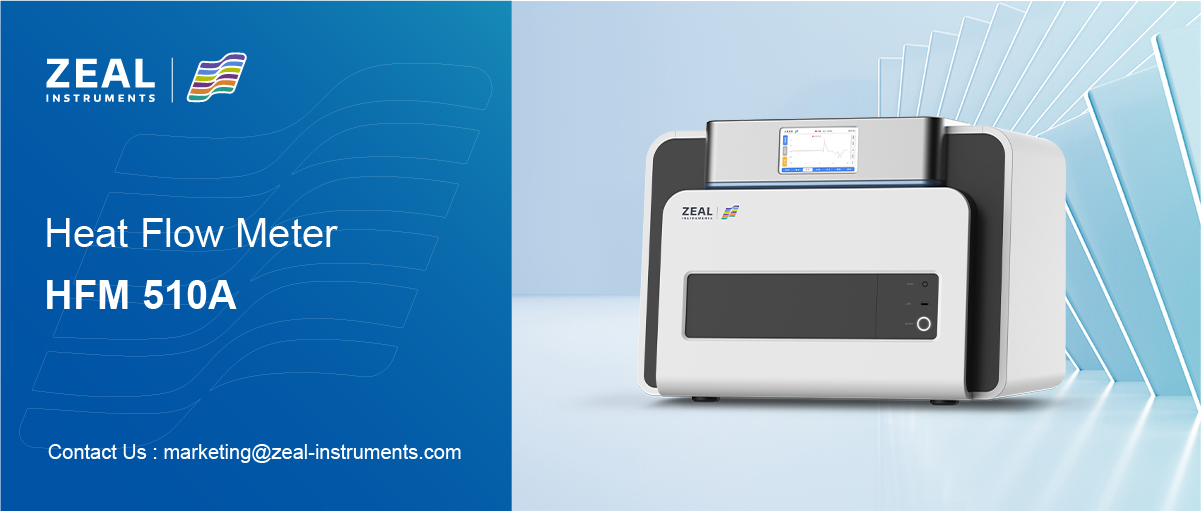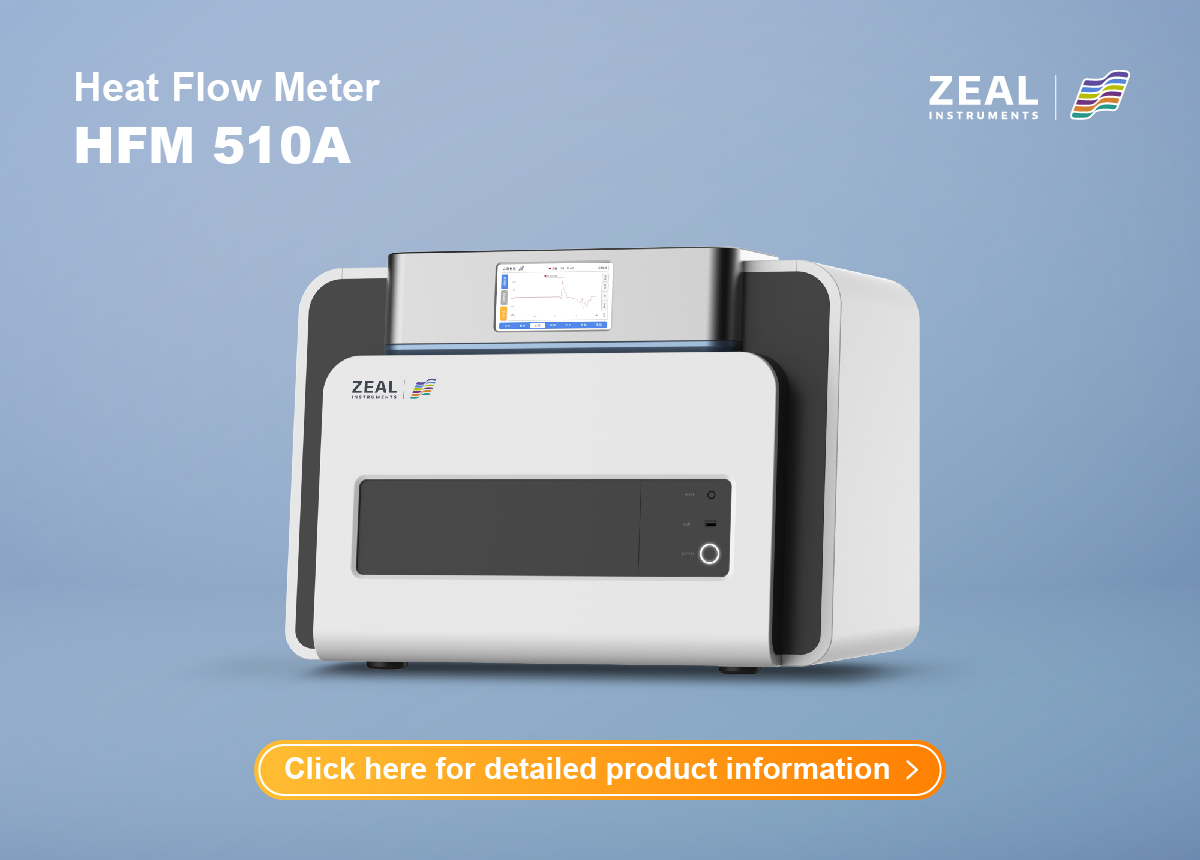Heat Flow Meter Principle: Understanding the Basics
If you’re interested in understanding how heat is transferred through materials, you may want to learn about the Heat Flow Meter Principle. This principle is used to measure the thermal conductivity of a material, which is a measure of how well the material conducts heat.
The Heat Flow Meter Principle involves using a heat flow meter, which is a device that measures the rate of heat flow through a material. The device consists of a plate-shaped measuring device that is placed between the material being tested and a temperature-controlled heating plate or cooling plate. By measuring the rate of heat flow through the test sample, the thermal conductivity of the material can be determined.
The Heat Flow Meter Principle is commonly used in a variety of industries, including construction, automotive, and aerospace. It is particularly useful for determining the thermal conductivity of insulation materials, as well as for evaluating the effectiveness of different materials for heat dissipation. By understanding the Heat Flow Meter Principle, you can gain a better understanding of how heat is transferred through materials and how to optimize the performance of thermal management systems.
Fundamentals of Heat Flow
Heat flow is an important concept in various industries, including engineering, physics, and chemistry. It refers to the transfer of energy from a region of higher temperature to a region of lower temperature. Understanding the fundamentals of heat flow is crucial in designing and operating heat flow meters. In this section, we will discuss the key concepts that underlie heat flow.
Thermal Conductivity
Thermal conductivity is the measure of a material’s ability to conduct heat. It is defined as the amount of heat that flows through a unit area of a material per unit time when a temperature gradient exists. Materials with high thermal conductivity allow heat to flow easily, while those with low thermal conductivity resist heat flow. Metals, for example, have high thermal conductivity, while insulators such as wood and plastic have low thermal conductivity.
Heat Transfer Basics
Heat transfer occurs in three ways: conduction, convection, and radiation. Conduction is the transfer of heat through a material without the movement of the material itself. Convection is the transfer of heat through the movement of fluids. Radiation is the transfer of heat through electromagnetic waves. Heat flow meters typically use conduction to measure heat flow.
Steady-State Conditions
Steady-state conditions refer to a situation where the temperature and heat flow remain constant over time. In this condition, the rate of heat flow into a system equals the rate of heat flow out of the system. Heat flow meters are typically designed to operate under steady-state conditions.
In summary, understanding the fundamentals of heat flow is essential in designing and operating heat flow meters. Thermal conductivity, heat transfer basics, and steady-state conditions are key concepts to consider when designing and operating heat flow meters.
Heat Flow Meter Design
The design of a heat flow meter involves a plate-shaped measuring device that is located between a heated and a cooled plate. The temperature difference is fixed, and a material sample of known thickness is placed between the plates. The rate of heat flow through the test sample is determined using a heat flow meter. The heat flow meter is a device that uses sensor technology to measure the heat flow rate through a material. The design of the heat flow meter is based on ASTM C518, JIS A1412, ISO 8301, and DIN 12667 standards.
Sensor Technology
The sensor technology used in heat flow meters is based on the principle of temperature difference measurement. The heat flow meter consists of two temperature sensors that are placed on either side of the test sample. The temperature sensors measure the temperature difference across the sample, which is used to calculate the rate of heat flow through the sample. The sensors are designed to be highly sensitive and accurate, ensuring that the heat flow rate is measured with a high degree of precision.
Guarded Hot Plate Method
The guarded hot plate method is another design used in heat flow meters. This method involves a sample that is placed between two plates, one of which is heated and the other is cooled. The heat flow rate through the sample is measured by placing a guard ring around the sample. The guard ring is designed to minimize the effects of heat loss through the edges of the sample, ensuring that the heat flow rate is accurately measured. The guarded hot plate method is a highly accurate method of measuring the thermal conductivity of a material.
In summary, the design of a heat flow meter involves a plate-shaped measuring device that uses sensor technology to measure the heat flow rate through a material. The sensor technology is based on the principle of temperature difference measurement, and the design of the heat flow meter is based on ASTM C518, JIS A1412, ISO 8301, and DIN 12667 standards. There are two main designs used in heat flow meters, the sensor technology design and the guarded hot plate method.
Measurement Process
The Heat Flow Meter (HFM) Principle is a widely used method for determining the thermal conductivity of materials. The measurement process consists of three main steps: calibration, sample preparation, and data acquisition.
Calibration
Before measuring the thermal conductivity of a material, it is essential to calibrate the HFM instrument. Calibration ensures that the HFM device is functioning correctly and provides accurate measurements. The calibration process involves measuring the thermal conductivity of a reference material with a known thermal conductivity value. The reference material should have similar thermal properties to the material being tested.
Sample Preparation
Once the HFM device is calibrated, the next step is to prepare the sample for testing. The sample should be a thin and flat material with a known thickness. The thickness of the sample is crucial because it affects the heat flow rate through the material. The sample should be placed between two plates, one heated and one cooled, and clamped tightly to ensure good thermal contact.
Data Acquisition
The final step in the HFM measurement process is data acquisition. The HFM device measures the heat flow rate through the sample, which is proportional to the thermal conductivity of the material. The temperature difference between the heated and cooled plates is also measured. The data is then used to calculate the thermal conductivity of the material using the HFM equation.
In conclusion, the HFM Principle is a reliable and accurate method for determining the thermal conductivity of materials. The measurement process involves calibration of the HFM device, sample preparation, and data acquisition. By following these steps, you can obtain accurate and reliable thermal conductivity values for a wide range of materials.
Data Analysis
Once you have collected the data using the Heat Flow Meter, you need to perform some calculations to analyze the results. Here are two key calculations that you need to perform:
Thermal Resistance Calculation
Thermal resistance is the measure of the resistance of a material to heat flow. It is calculated by dividing the thickness of the material by its thermal conductivity. The formula for thermal resistance calculation is:
R = Δx / k
where R is the thermal resistance, Δx is the thickness of the material, and k is the thermal conductivity of the material.
Thermal Conductance
Thermal conductance is the measure of the ability of a material to conduct heat. It is the reciprocal of thermal resistance. The formula for thermal conductance calculation is:
C = k / Δx
where C is the thermal conductance, Δx is the thickness of the material, and k is the thermal conductivity of the material.
Once you have calculated these values, you can use them to compare the thermal properties of different materials. You can also use them to determine the effectiveness of insulation materials or to optimize the design of heat exchangers.
It is important to note that the accuracy of the Heat Flow Meter method is affected by uncertainties. Therefore, it is recommended to perform multiple measurements to obtain accurate results.
Applications and Limitations
Material Types
Heat flow meters can be used to measure the flow rate of gases and liquids. However, the specific material being measured can have an impact on the accuracy and precision of the measurement. For example, some materials may have a low thermal conductivity, which can make it difficult to accurately measure the flow rate. On the other hand, materials with a high thermal conductivity may be easier to measure, but may require more complex instrumentation.
Environmental Factors
Environmental factors can also impact the accuracy and precision of heat flow meter measurements. For example, changes in temperature or pressure can affect the thermal conductivity of the material being measured, which can impact the accuracy of the measurement. Additionally, changes in flow rate or viscosity can also impact the accuracy of the measurement.
Accuracy and Precision
Heat flow meters can provide accurate and precise measurements of flow rate, but there are limitations to their accuracy and precision. For example, some heat flow meters may have a limited range of flow rates that they can accurately measure. Additionally, the accuracy and precision of the measurement can be impacted by factors such as the material being measured, environmental factors, and the quality of the instrumentation used.
Overall, heat flow meters can be a useful tool for measuring the flow rate of gases and liquids, but it is important to consider the specific material being measured and environmental factors that may impact the accuracy and precision of the measurement.






































